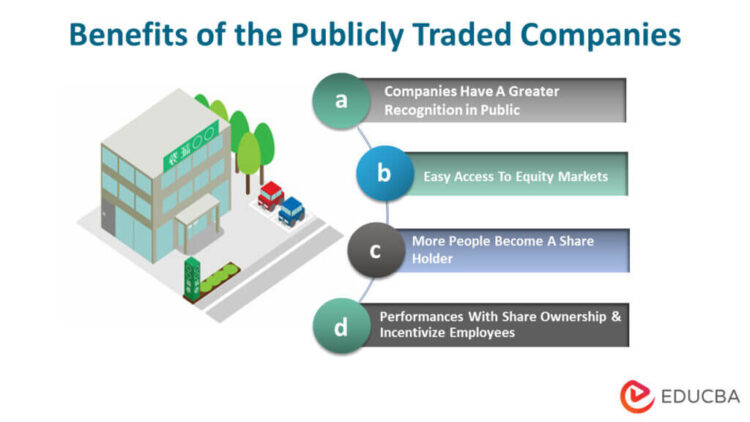
How to make money in the stock market: It’s a question that’s intrigued investors for generations, and for good reason. The stock market offers the potential for substantial financial growth, but it’s not without its risks. This guide will walk you through the basics, from understanding different investment strategies to managing risk and navigating the complexities of trading.
We’ll explore fundamental and technical analysis, learn about different types of orders, and discuss the tax implications of stock market investing. By the end, you’ll have a solid foundation to start your own investment journey, whether you’re a seasoned trader or just starting out.
Understanding the Stock Market
The stock market is a complex and dynamic system that plays a crucial role in the global economy. It is a platform where investors can buy and sell shares of publicly traded companies, which represent ownership in those companies. Understanding the basics of the stock market is essential for anyone considering investing in it.
Types of Securities
Securities are financial instruments that represent ownership or debt. The stock market primarily deals with three main types of securities: stocks, bonds, and mutual funds.
- Stocks represent ownership in a company. When you buy stock, you become a shareholder and have the right to vote on company decisions and receive dividends, which are a portion of the company’s profits. There are two main types of stocks: common stock and preferred stock. Common stock holders have voting rights, while preferred stock holders receive a fixed dividend payment.
- Bonds represent debt that a company or government owes to investors. When you buy a bond, you are lending money to the issuer and receive interest payments over time. Bonds are generally considered less risky than stocks because they offer a fixed return.
- Mutual Funds are investment vehicles that pool money from multiple investors to purchase a diversified portfolio of stocks, bonds, or other assets. Mutual funds offer diversification and professional management, making them a popular choice for investors with limited time or expertise.
Types of Stock Markets
The stock market is not a single entity but a collection of different exchanges around the world. Each exchange has its own rules and regulations, but they all serve as platforms for buying and selling securities.
- Primary Market: This is where companies issue new securities for the first time. Investors purchase these securities directly from the company, and the proceeds go to the company for its operations or expansion. This is often referred to as an initial public offering (IPO).
- Secondary Market: This is where existing securities are bought and sold between investors. This is where most trading activity occurs, and it is the market that most investors are familiar with. The New York Stock Exchange (NYSE) and the Nasdaq Stock Market are examples of secondary markets.
Major Stock Exchanges
Several major stock exchanges operate worldwide, each with its own unique characteristics and role.
- New York Stock Exchange (NYSE): The NYSE is the largest stock exchange in the world by market capitalization. It is known for its high trading volume and its focus on large, established companies.
- Nasdaq Stock Market: Nasdaq is the second-largest stock exchange in the world and is known for its focus on technology companies. It is also the largest electronic stock exchange, meaning that trades are executed electronically rather than through a physical trading floor.
- London Stock Exchange (LSE): The LSE is the largest stock exchange in Europe and is known for its focus on international companies. It is also a major center for the trading of derivatives, which are financial instruments that derive their value from an underlying asset.
Investment Strategies: How To Make Money In The Stock Market

Investing in the stock market involves making calculated decisions about how to allocate your capital to achieve your financial goals. Various investment strategies exist, each with its own set of principles and risk-reward profiles. Understanding these strategies is crucial for navigating the complexities of the market and making informed investment choices.
Value Investing
Value investing focuses on identifying undervalued stocks with strong fundamentals and purchasing them at a discount to their intrinsic value. This strategy emphasizes long-term investment, seeking to capitalize on market inefficiencies and capitalize on the potential for price appreciation as the market recognizes the true worth of the company.
Value investors often use a variety of tools and metrics to analyze companies, including:
- Financial ratios: Analyzing key financial ratios like price-to-earnings (P/E) ratio, price-to-book (P/B) ratio, and dividend yield can help identify undervalued companies with strong profitability and asset values. For example, a company with a low P/E ratio relative to its industry peers might suggest it’s undervalued by the market.
- Balance sheet analysis: Examining a company’s balance sheet provides insights into its financial health, including its debt levels, cash flow, and working capital. Value investors seek companies with strong balance sheets, indicating financial stability and a lower risk profile.
- Industry analysis: Understanding the industry dynamics and competitive landscape can help identify companies with strong competitive advantages and growth potential. For example, a company operating in a growing industry with a dominant market share might be a compelling value investment opportunity.
Advantages of Value Investing
- Potential for higher returns: Value investing aims to capitalize on market inefficiencies and buy undervalued assets, potentially leading to higher returns over the long term.
- Lower risk: Focusing on companies with strong fundamentals and solid financial health can mitigate risk, as these companies are generally more stable and less susceptible to market volatility.
- Long-term focus: Value investing encourages a long-term perspective, avoiding short-term market fluctuations and focusing on the intrinsic value of companies.
Disadvantages of Value Investing
- Slower growth: Value investing may not generate rapid returns compared to other strategies, as it often involves investing in mature companies with slower growth rates.
- Market timing: Identifying undervalued companies requires thorough research and analysis, and the market may not always recognize their true value immediately, potentially leading to periods of underperformance.
- Limited opportunity: The number of truly undervalued companies available for investment may be limited, requiring extensive research and analysis to find suitable opportunities.
Growth Investing
Growth investing focuses on companies experiencing rapid revenue and earnings growth. This strategy aims to capitalize on the potential for significant price appreciation as companies expand their operations and market share. Growth investors often prioritize companies with innovative products or services, strong management teams, and a clear path to future growth.
Growth investors often use metrics like:
- Revenue growth: Analyzing a company’s revenue growth rate can indicate its ability to generate sales and expand its business.
- Earnings per share (EPS) growth: Evaluating the growth rate of earnings per share can provide insights into a company’s profitability and efficiency.
- Market share: Companies with a dominant market share or the potential to gain market share can benefit from significant growth opportunities.
Advantages of Growth Investing
- Potential for high returns: Growth investing can generate significant returns if companies meet or exceed growth expectations.
- Exposure to innovation: Growth investing allows investors to participate in the growth of innovative companies with the potential to disrupt industries.
- Long-term potential: Investing in companies with strong growth potential can lead to substantial returns over the long term.
Disadvantages of Growth Investing
- Higher risk: Growth companies often operate in fast-growing but volatile industries, making them more susceptible to market fluctuations and economic downturns.
- Valuation challenges: Valuing growth companies can be challenging, as their future earnings and growth prospects are often uncertain.
- Competition: The rapid growth of innovative companies often attracts competition, which can impact their future earnings and market share.
Momentum Investing
Momentum investing focuses on identifying stocks with strong upward price momentum, often driven by positive news, earnings releases, or industry trends. This strategy aims to capitalize on the tendency of stocks with strong momentum to continue rising in price. Momentum investors often use technical analysis and indicators to identify stocks with strong price trends.
Momentum investors often use indicators like:
- Relative Strength Index (RSI): The RSI measures the magnitude of recent price changes to evaluate overbought or oversold conditions. A high RSI value indicates strong upward momentum.
- Moving averages: Moving averages smooth out price fluctuations and identify trends. A stock trading above its moving average suggests upward momentum.
- Volume: High trading volume can indicate strong investor interest and support for a stock’s price momentum.
Advantages of Momentum Investing
- Potential for quick returns: Momentum investing can generate quick returns if stocks continue their upward trend.
- Easy to identify: Momentum stocks are relatively easy to identify using technical analysis tools and indicators.
- Market-neutral: Momentum investing can be applied in both bull and bear markets, as it focuses on identifying stocks with strong price trends regardless of the overall market direction.
Disadvantages of Momentum Investing
- High risk: Momentum investing is inherently risky, as stocks with strong momentum can quickly reverse course and decline in price.
- Short-term focus: Momentum investing emphasizes short-term price trends, which can lead to frequent trading and potential for losses if the momentum fades.
- Overbought conditions: Stocks with strong momentum can become overbought, leading to a sharp correction and significant losses.
Fundamental Analysis
Fundamental analysis is a crucial part of stock selection, as it involves examining a company’s financial health and future prospects to determine its intrinsic value. This approach helps investors make informed decisions about buying, selling, or holding stocks by focusing on the underlying factors that drive a company’s performance.
Key Financial Metrics
Investors use various financial metrics to assess a company’s financial performance and determine its value. Some of the most important metrics include:
- Earnings per share (EPS): This metric measures a company’s profitability by dividing its net income by the number of outstanding shares. A higher EPS generally indicates a more profitable company.
- Price-to-earnings ratio (P/E ratio): This ratio compares a company’s stock price to its earnings per share. A high P/E ratio may suggest that investors are optimistic about a company’s future growth, while a low P/E ratio may indicate that investors are less confident.
- Debt-to-equity ratio: This ratio measures a company’s financial leverage by comparing its total debt to its total equity. A high debt-to-equity ratio may indicate that a company is highly leveraged and could be at risk of financial distress.
Comparing Financial Performance
To illustrate how fundamental analysis can be used to compare companies, let’s consider two publicly traded companies: Apple Inc. (AAPL) and Microsoft Corporation (MSFT).
Apple Inc. (AAPL) is a multinational technology company that designs, develops, and sells consumer electronics, computer software, and online services. Microsoft Corporation (MSFT) is a multinational technology company that develops, licenses, supports, and sells computer software, consumer electronics, personal computers, and related services.
Examining their financial statements, we can see that Apple has a higher P/E ratio than Microsoft, suggesting that investors are more optimistic about Apple’s future growth. However, Microsoft has a lower debt-to-equity ratio, indicating that it is less leveraged and potentially less risky.
By comparing these metrics, investors can gain insights into the relative financial health and future prospects of these two companies and make informed decisions about which stock to invest in.
Technical Analysis
Technical analysis is a method of evaluating securities by analyzing past market data, primarily price and volume. It focuses on identifying patterns and trends in the market to predict future price movements. Technical analysts believe that market action reflects all relevant information, and historical price data can be used to forecast future prices.
Moving Averages
Moving averages are a common technical indicator used to smooth out price fluctuations and identify trends. They are calculated by averaging the closing prices of a security over a specific period. The most common types of moving averages are simple moving averages (SMAs) and exponential moving averages (EMAs).
* Simple Moving Averages (SMAs): SMAs are calculated by adding up the closing prices of a security over a specified period and dividing by the number of periods. For example, a 20-day SMA is calculated by averaging the closing prices of the past 20 days.
* Exponential Moving Averages (EMAs): EMAs give more weight to recent prices, making them more responsive to changes in price trends. They are calculated using a smoothing factor that assigns a higher weight to recent prices.
Crossovers: A bullish crossover occurs when a shorter-term moving average crosses above a longer-term moving average. This suggests that the price trend is shifting upward. A bearish crossover occurs when a shorter-term moving average crosses below a longer-term moving average, indicating a potential downward trend.
Relative Strength Index (RSI)
The Relative Strength Index (RSI) is a momentum indicator that measures the magnitude of recent price changes to evaluate overbought or oversold conditions in the market. It is calculated using a formula that compares the average gains to the average losses over a specific period, typically 14 days.
RSI Formula: RSI = 100 – (100 / (1 + (Average Gain / Average Loss)))
* Overbought: An RSI reading above 70 is considered overbought, suggesting that the security is likely to decline in the near future.
* Oversold: An RSI reading below 30 is considered oversold, suggesting that the security is likely to rise in the near future.
MACD
The Moving Average Convergence Divergence (MACD) is a trend-following momentum indicator that shows the relationship between two moving averages of prices. It is calculated by subtracting the 26-period EMA from the 12-period EMA.
MACD Formula: MACD = 12-period EMA – 26-period EMA
* Crossovers: A bullish crossover occurs when the MACD line crosses above the signal line, suggesting a potential upward trend. A bearish crossover occurs when the MACD line crosses below the signal line, indicating a potential downward trend.
* Divergence: Divergence occurs when the price action of a security does not confirm the direction of the MACD indicator. For example, if the price is making new highs, but the MACD is making new lows, this is a bearish divergence.
Technical Chart
A technical chart is a graphical representation of price and volume data for a security over time. It can be used to identify trends, patterns, and support and resistance levels.
* Support Levels: Support levels are price levels where buying pressure is expected to be strong enough to prevent further declines.
* Resistance Levels: Resistance levels are price levels where selling pressure is expected to be strong enough to prevent further advances.
Example:
Imagine a stock chart of Apple Inc. (AAPL) showing a clear upward trend. The 50-day moving average is above the 200-day moving average, indicating a strong bullish trend. The RSI is above 50, indicating that the stock is in a strong uptrend. The MACD line is above the signal line, further confirming the bullish momentum. Additionally, the chart shows that the price has been bouncing off a support level at $150, suggesting that buying pressure is strong at this level. This chart provides a clear indication that the stock is likely to continue its upward trend.
Risk Management
Risk management is crucial in stock market investing, as it involves navigating potential losses while aiming for profits. Effective risk management strategies protect your capital and help you stay in the game for the long haul.
Diversification
Diversification is a fundamental risk management strategy that involves spreading your investments across different asset classes, sectors, and industries. This reduces the impact of any single investment’s performance on your overall portfolio. By diversifying, you’re essentially hedging your bets, decreasing the likelihood of significant losses due to a single investment going sour.
Stop-Loss Orders
Stop-loss orders are pre-set instructions that automatically sell a stock when it reaches a specific price point. They act as a safety net, limiting potential losses on a given investment. These orders can be particularly helpful during market volatility, preventing substantial losses if a stock’s price drops unexpectedly.
Portfolio Rebalancing
Portfolio rebalancing involves periodically adjusting the proportions of different asset classes within your portfolio. This ensures that your asset allocation remains aligned with your investment goals and risk tolerance. Rebalancing involves selling overperforming assets and buying underperforming ones, helping to maintain a balanced and diversified portfolio.
Hypothetical Portfolio
Imagine a hypothetical portfolio with a 60/40 stock-to-bond allocation. This allocation is considered relatively conservative, with a higher proportion of bonds providing stability and lower risk.
* Stocks: 60% of the portfolio is invested in a diversified basket of large-cap U.S. stocks, including a mix of growth and value companies. This portion offers potential for higher returns but also carries higher volatility.
* Bonds: 40% of the portfolio is invested in a diversified portfolio of U.S. Treasury bonds, corporate bonds, and investment-grade bonds. This portion provides stability and income, mitigating some of the risk associated with stocks.
This portfolio demonstrates how risk management can be implemented through diversification. The allocation of 60% to stocks allows for potential growth, while the 40% allocation to bonds provides stability and mitigates risk. Regular rebalancing ensures that the portfolio remains aligned with the investor’s risk tolerance and investment goals.
Trading and Execution

Now that you understand the fundamentals of the stock market and have chosen your investment strategies, it’s time to dive into the practical aspects of trading and executing your orders. This section will cover the different types of orders, explore brokerage platforms, and guide you through the process of placing trades.
Types of Stock Orders
Stock orders are instructions you give to your broker to buy or sell shares. Different types of orders offer varying levels of control and flexibility.
- Market Order: This is the simplest type of order. It instructs your broker to execute the trade immediately at the best available price. Market orders are best for when you need to buy or sell quickly, but you don’t have a specific price in mind.
- Limit Order: This type of order lets you set a maximum price for buying or a minimum price for selling. If the market price doesn’t reach your limit, the order won’t be executed. Limit orders are helpful for investors who want to buy low or sell high.
- Stop Order: This order is triggered when the price of a stock reaches a specific price level. Stop orders are commonly used for loss limitation. For example, a stop-loss order can be set to sell your shares if the price falls below a certain point, preventing further losses.
Brokerage Platforms and Fees
Brokerage platforms are essential tools for trading stocks. They allow you to research stocks, place orders, and monitor your portfolio. Here are some key factors to consider when choosing a brokerage platform:
- Fees: Brokerage platforms charge different fees for trading, account maintenance, and other services. Some platforms offer commission-free trading, while others charge a flat fee per trade or a percentage of the transaction value.
- Trading Tools: Look for platforms that offer a variety of trading tools, such as real-time quotes, charting capabilities, and research reports.
- Customer Support: It’s important to have access to reliable customer support, especially if you’re new to investing.
- Account Minimums: Some brokerage platforms require a minimum deposit to open an account.
Placing a Buy or Sell Order
Once you’ve chosen a brokerage platform, you can start placing orders. Here’s a general process:
- Log in to your brokerage account: Enter your username and password to access your account.
- Search for the stock you want to trade: Use the platform’s search function to find the ticker symbol of the stock.
- Choose your order type: Select the type of order you want to place, such as a market order, limit order, or stop order.
- Enter the quantity of shares: Specify the number of shares you want to buy or sell.
- Review and confirm your order: Double-check all the details of your order before submitting it.
- Submit your order: Once you’re satisfied with the order details, click the “Submit” button to execute the trade.
Tax Considerations
You’ve learned the ins and outs of investing, but don’t forget about the taxman! Understanding how taxes affect your stock market gains and losses is crucial to maximizing your returns.
Taxes can significantly impact your investment profits, so it’s important to factor them into your investment decisions. Here’s a breakdown of how taxes work in the stock market and how to minimize your tax liability.
Capital Gains Taxes, How to make money in the stock market
Capital gains taxes apply to profits realized when you sell an asset, like a stock, for more than you paid for it. The tax rate depends on how long you held the asset, referred to as your holding period.
- Short-term capital gains are taxed at your ordinary income tax rate, which can be as high as 37%. These gains arise from holding an asset for less than a year.
- Long-term capital gains are taxed at lower rates, typically 0%, 15%, or 20%, depending on your income level. These gains arise from holding an asset for a year or longer.
For example, if you buy a stock for $100 and sell it for $150 after six months, you’ll have a $50 short-term capital gain taxed at your ordinary income tax rate. If you hold the same stock for two years and sell it for $150, you’ll have a $50 long-term capital gain taxed at the lower long-term capital gains rate.
Dividend Taxes
Dividends are distributions of a company’s profits to its shareholders. Dividends are taxed at the same rates as capital gains.
- Qualified dividends are taxed at the lower long-term capital gains rates. These dividends are typically paid by U.S. corporations.
- Unqualified dividends are taxed at your ordinary income tax rate. These dividends are often paid by foreign corporations or certain other entities.
For example, if you receive a $100 dividend from a U.S. corporation and hold the stock for more than a year, the dividend is considered qualified and taxed at the lower long-term capital gains rate. If you receive a $100 dividend from a foreign corporation, it’s considered unqualified and taxed at your ordinary income tax rate.
Tax-Loss Harvesting
Tax-loss harvesting is a strategy that allows you to offset capital gains with capital losses. This can help you reduce your overall tax liability.
- Selling losing investments: You can sell losing investments to realize a capital loss. This loss can then be used to offset capital gains, reducing your taxable income.
- Wash sale rule: Be aware of the wash sale rule, which prevents you from claiming a loss if you buy back the same or substantially identical security within 30 days before or after selling it. This rule is designed to prevent investors from artificially creating losses for tax purposes.
For example, if you sell a stock for a $1,000 loss and have a $500 capital gain from another stock, you can use the $1,000 loss to offset the $500 gain, reducing your taxable capital gains to $0. You can also carry forward any unused losses to offset future capital gains.
Tax Treatment of Different Investment Vehicles
The tax treatment of different investment vehicles can vary. Here’s a table comparing the tax treatment of stocks, bonds, and mutual funds:
| Investment Vehicle | Taxation | Notes |
|---|---|---|
| Stocks | Capital gains taxes on sale | Dividends are taxed as ordinary income or qualified dividends, depending on the source. |
| Bonds | Interest income is taxed as ordinary income. | Capital gains taxes may apply on sale if the bond was purchased at a discount or if the bond is sold for more than the purchase price. |
| Mutual Funds | Distributions are taxed as either dividends or capital gains, depending on the fund’s holdings. | Mutual funds may also have capital gains taxes on fund shares sold by the fund manager. |
It’s important to consult with a tax professional to determine the best investment strategy for your individual circumstances.
Investing for the Long Term

The stock market can be a volatile place, with prices fluctuating daily. However, for those with a long-term investment horizon, the market’s ups and downs become less relevant. Investing for the long term means focusing on the overall growth of your investments over many years, rather than trying to time the market or make quick profits.
The Importance of a Long-Term Investment Horizon
A long-term investment horizon allows you to ride out the inevitable market fluctuations and benefit from the power of compounding. Compounding is the process of earning interest on your initial investment, and then earning interest on that interest, and so on. This creates a snowball effect that can significantly boost your returns over time.
Dollar-Cost Averaging
Dollar-cost averaging is a strategy that involves investing a fixed amount of money at regular intervals, regardless of the stock market’s current performance. This strategy helps to mitigate the risk of buying high and selling low. By investing consistently over time, you’ll naturally buy more shares when prices are low and fewer shares when prices are high.
A Hypothetical Long-Term Investment Plan for Retirement
Let’s say you’re 25 years old and want to retire at age 65. You have a long-term investment horizon of 40 years. Here’s a hypothetical plan that you could consider:
Asset Allocation
- Stocks: 70% – Stocks have the potential for higher returns over the long term. This allocation allows for growth and outpacing inflation.
- Bonds: 20% – Bonds provide stability and lower risk compared to stocks. This allocation helps balance the portfolio and reduce volatility.
- Cash: 10% – Cash provides liquidity and acts as a safety net for emergencies. This allocation can be adjusted based on your risk tolerance and market conditions.
Investment Goals
- Save $1 million by retirement.
- Contribute $10,000 annually to your retirement account.
- Rebalance your portfolio annually to maintain your desired asset allocation.
It’s important to remember that this is just a hypothetical plan, and your actual investment plan should be tailored to your individual circumstances, risk tolerance, and financial goals. Consult with a financial advisor for personalized advice.
Conclusive Thoughts
Investing in the stock market is a journey, not a sprint. It’s about understanding your risk tolerance, developing a sound investment strategy, and staying patient. Remember, the market goes up and down, but over the long term, it has consistently provided positive returns. With the right knowledge and approach, you can confidently navigate the world of stocks and potentially achieve your financial goals.
Questions and Answers
What is the best way to get started in the stock market?
Start with a small amount of money you can afford to lose and invest in a low-cost index fund or ETF. Educate yourself about the market and different investment strategies, and consider working with a financial advisor if you need personalized guidance.
How much money do I need to start investing in the stock market?
You can start investing with as little as $10 or $20 through fractional shares or robo-advisors. The important thing is to start investing consistently and grow your portfolio over time.
What are some good resources for learning more about the stock market?
There are many great resources available online and in libraries, including books, websites, and courses. Look for reputable sources from established financial institutions, universities, or experienced investors.





